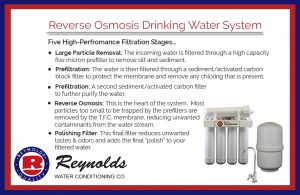Lead is a naturally occurring element found in the Earth’s crust in small amounts. It can be beneficial in specific uses, but it is a harmful metal to a person’s health and there is no safe level for lead exposure to humans. People are exposed to lead products that range from lead-based paint, air, soil, dust inside homes, food, pottery, and even drinking water. Consuming high levels of this metal can cause health issues once it enters the blood, especially for younger children.
Effects of Lead
The EPA is required by the Safe Drinking Water Act to determine the level of contaminants in drinking water that is considered safe with minimum health effects. The standard allowed for lead is set to zero, and even at low levels, lead can be very harmful and can accumulate in the body over time. Lead is a neurotoxin that can cause brain disorders and severe kidney damage. The effects of lead do not equally impact individuals. The risks will vary depending on the person, the chemical properties of the water, and the amount of lead consumed. Specific issues found in people:
- Pregnant Women – As discussed above, lead can accumulate in the body over time and can be found in a person’s bones along with calcium. Lead is released from the mother’s bones when maternal calcium transfers to the fetus to help develop bones for the baby. The lead can also cross the placental barrier that can expose the fetus, possibly causing reduced growth and premature birth.
- Infants and Children – Infants who consume water with lead content may be at a higher risk of exposure since the large volume of water they consume is relative to the proportion of their smaller body size. Children are often vulnerable to lead poisoning due to the fact they drink more water and have developing bodies. High levels of lead exposure can cause convulsions, significant neurological damage, organ failure, coma, and even death. Lower exposure of lead can cause hearing loss, reduced growth, and an increased chance of learning and behavior disabilities.
- Adults – Adults who are exposed to lead can suffer from health issues such as cardiovascular effects with increased blood pressure and hypertension. In addition, older persons can develop kidney damage and complications with reproductive organs.
How Does Lead Get in Tap Water?
Lead is in all areas of our environment and can be found in the air, soil, and water. Lead can even be found within our homes in certain places. Most lead contaminates come from human activities such as the use of fossil fuels and gasoline, factories, or lead-based paints. When lead is released into the air, it can travel long distances before it settles in soil or water supplies. Lead can merge into drinking water, causing corrosion to take place, and eating away at the piping within homes. In older houses, before 1930, lead was used for soldering pipes. It wasn’t until the early 1980s when we saw a decrease of lead being used for pipes in homes.
Lead Removal
If you suspect that lead may be in your water, we advise that you get your water analyzed by a certified laboratory, or at minimum, purchase a DIY self-test kit to determine for sure. The good news is, lead can be removed from your drinking water. The simplest way to solve this issue is by using the correct water filter after the contamination source is identified. The three basic water filtration methods to remove lead are:
- Reverse Osmosis – The most popular and inexpensive option, and it can eliminate 95% of lead in water.
- Activated Carbon Filtration – This option allows the activated carbon in filters to absorb minerals such as lead and magnesium from the water, decreasing the amount of lead supply significantly. However, the disadvantage is that the filter cartridges may fill up quickly and need replacement often. The lead removing capabilities also decrease after a certain amount of water has been passed through the system.
- Distillation – This method produces the purest water, but it comes with an expensive price tag and requires a lot of electricity and processing time as well.
The experts at Reynolds Water Conditioning have a solution to your home’s unique water quality needs, including arsenic, bacteria, chlorine, rotten egg smell, fluoride, hard water, iron, lead, acid, tannins, radon, and more. More information on water treatment solutions, including water softeners and conditioners, water filtration and purification, reverse osmosis drinking water, and iron & odor removal, can be found online at https://reynoldswater.com.

